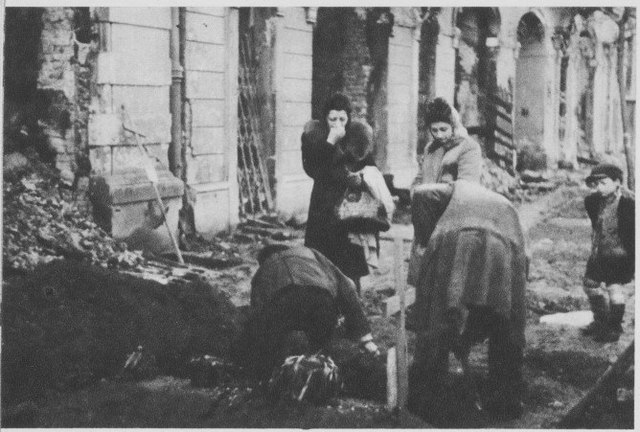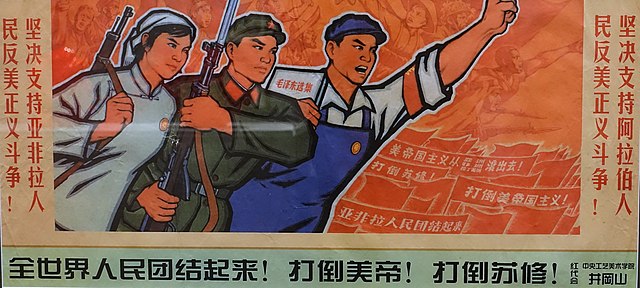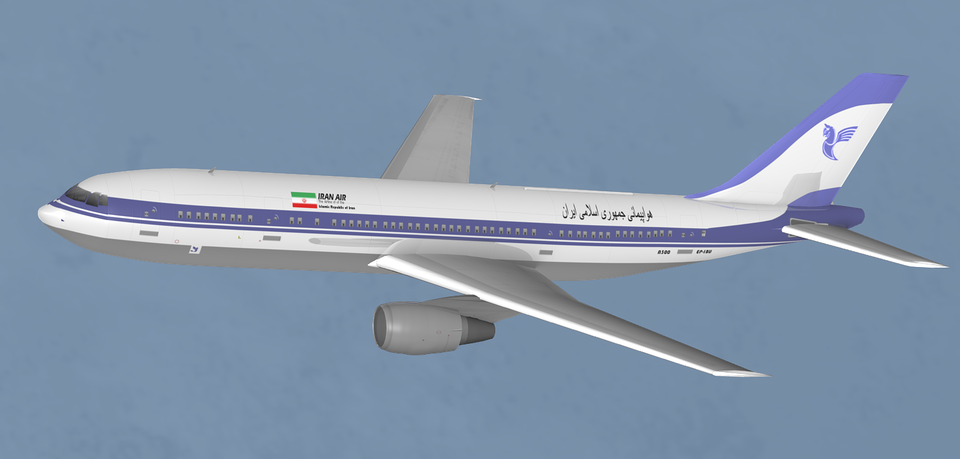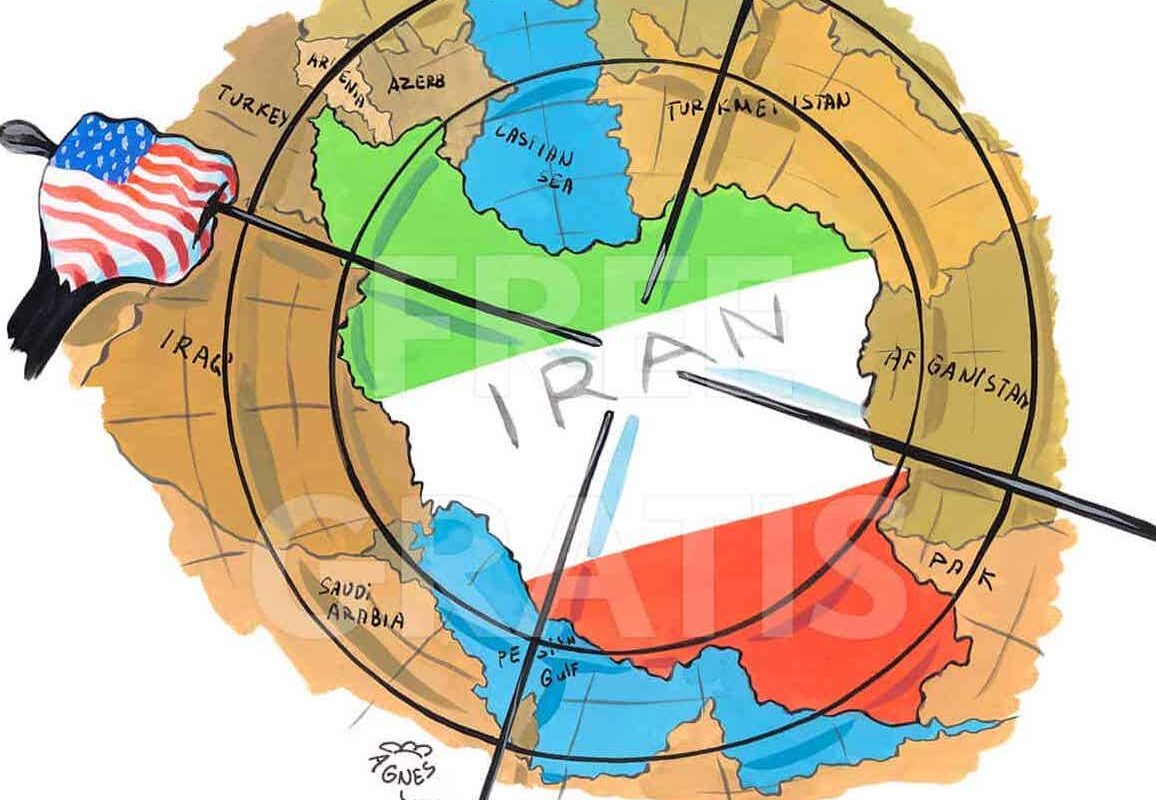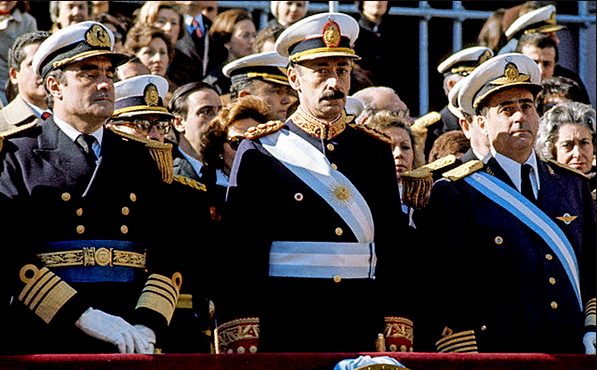On August 1, 1944 – 79 years ago – the Warsaw Uprising was launched in secrecy. It led to a massacre of the Poles by the Nazi forces. Why had it been called – and why was it launched in secrecy?
First the intense history of rivalry and wars between Poland and Russia:
“for six centuries the Eastern Slavs—Great Russians, Ukrainians and Byelorussians on the one hand—and the Poles, one of the branches of the Western Slavs, on the other—were engaged in a bitter fratricidal struggle.”
W.P and Zelda K. Coates; “Six Centuries of Russo-Polish Relations”; London 1948; p.i
Second, the composition of the “London Poles” forming the self-proclaimed “government-in-exile” following the German occupation of 1939. They were heirs of the Pilsudski militarist semi-fascists. Marshall Pilsudksi’s grand project was to forge a Polish Commonwealth from the Black to the Baltic Sea – infringing on the USSR. In the Treaty of Riga in 1921 he effected part of this allowing Polish colonization. Many Polish settlers and officials moved into Byelorussia and Ukraine, yet “The Times concluded.. “On a liberal estimate, there were hardly more than 2,250,000 to 2,500,000 Poles east of the Curzon Line in a total population of over 11,000,000.” (“The Times” January 12, 1944; Coates & Coates (hereafter C&C) p.118 )
The Treaty of Riga (1920) cut off Byelorussia and Ukraine, from the USSR. Attempting to keep these gains, Polish Governments made rapprochements with Hitler. Pilsudski rejected “collective security” including the USSR: “By January 1934 Poland stood aside from efforts to create a system of collective security. Pilsudski launched Poland upon this policy.” (R.F.Leslie, “Poland Since 1863”; Cambridge 2009; p.183)
Thirdly, against the larger interests of the nation, Poland’s rulers frustrated attempts to unite with the USSR against Hitler. Moreover, on 31 March 1939, without consulting the Soviet Union, the British government gave a meaningless, and unilateral guarantee to defend Poland against aggression. As the liberal Party leader, David Lloyd George, told Parliament: “I cannot understand why, before committing ourselves to this tremendous enterprise, we did not secure beforehand the adhesion of Russia. . . .. . unless the Poles are prepared to accept .. the responsibility must be theirs”. (Parliamentary Debates. House of Commons, Volume 35; London; 1939; Col. 2,510)
Allies reject Soviet attempts at mutual security
On 17 April 1939 the Soviet government proposed a trilateral mutual assistance treaty by Britain, France and the Soviet Union against German aggression. While on 23 July the British and French governments finally agreed to negotiations, but their delegation only arrived in Moscow on 11 August. The British delegation was officially instructed to: “Go very slowly with the conversations.” (“Documents on British Foreign Policy;’ Volume 6; London; 1953; Appendix 5; p. 763″.
As historian Edward Carr put it: “The most striking feature of the Soviet-German negotiations . . . is the extreme caution with which they were conducted from the Soviet side, and the prolonged Soviet resistance to close the doors on the Western negotiations” (E.H. Carr: ‘From Munich to Moscow: II’, in: ‘Soviet Studies’, Volume 1, No. 12 (October 1949); p. 104)
When it became clear the Allies were stalling, the Molotov-Ribbentrop Pact was signed. As E.H.Carr said, it gained a critical ‘breathing space’ of two years before the USSR was invaded by Germany.
After the German Invasion of Poland
When Germany in a long-anticipated blitzkrieg took Poland, the USSR occupied Eastern Poland. Most observers saw Russia had no choice but to occupy “White Russia and Ukraine” – parts taken by Poland after the Treaty of Riga. “Russia knows well that were Hitler to defeat the Western Powers, or merely attain an inconclusive peace with them, his programme for German puppet States in White Russia and the Ukraine would quickly revive, and Russia would be his next victim.” (C&C p. 127 citing “Times” September 23, 1939)
Even Winston Churchill, acknowledged this:
“It cannot be in accordance with the interest or safety of Russia that Nazi Germany should plant itself upon the shores of the Black Sea, or that it should over-run the Balkan States and subjugate the Slavonic peoples of South Eastern Europe.”
(Speech October 1, 1939; Cited C&C Ibid; p.141.)
The Polish Government fled and General Sikorski led (after his death Mikolajczyk) led the self-proclaimed Polish Government-in-exile or the “London Poles”. The London Poles resisted the new changes in the USSR occupied Byelorussia and Ukraine, where a socialist movement had arisen.
After the ‘breathing space’ Germany invaded Russia. The British government refused guaranteeing Poland’s borders in the Treaty of Riga. But Sikorski refused to discuss this with the USSR. Nazi war criminal Joseph Goebbels rejoiced in such manifest division in the Allied Front: “Our anti-Bolshevik propaganda has achieved notable successes. .. This discord in the Allies has already become strikingly visible. The quarrel between the Soviet Union and Poland concerning the drawing of frontiers exceeds by far the bounds usually respected by allies in wartime.” (Joseph Goebbels, “Goebbels Diaries, 1942-1943”; New York 1948; p. 259)
The USSR bore most of the toil, hardships and mortality of World War Two. Yet Poland was content to assist delaying the Second Front in the West against Hitler.
A resistance army in Warsaw in September 1939 known as the Home Army (AK) was the internal Polish arm of the London Poles. Its leaders were former pro-Pilsudski officers led by Tadeusz Bor-Komorowski. It was instructed to remain hidden, secretive and not cooperate with the USSR. However it was passive against German occupiers, as ordered by the London Poles. The leaders could not be persuaded to surge into active resistance:
“The Warsaw leaders were ordered by the Government to limit retaliatory operations to a bare minimum. to resist the demands of the masses for more drastic measures.” (Jan. M. Ciechanowski; “The Warsaw Rising of 1944”; Cambridge 1974; p.91)
The Home Army numbered around “a few hundred thousand men… most unarmed”. But in June 1944, the London based Polish general staff estimated that there were arms for only 32,000 men. Warsaw contained 50-70,000 fighters including 4,300 women. But only one-sixth had weapons.
The communist wing of the resistance was the People’s Army (Armia Ludowa – AL). Because its partisans were active, launching anti-German attacks, it attracted more of the youth. But the Peoples’ Army was smaller at 50,000-60,000 partisans. (Ciechanowski; p.115)
Despite enormous obstacles, the USSR pushed the German fascists out, and began ‘Operation Bagration” to destroy the last German forces. While a tremendous success, it came at a terrible cost of Soviet deaths and casualties (Alexander Werth, “Russia At War 1941-45; London 1964; p.766). The Red Army was now in South Poland. By July 31 the Red Army arrived on the banks of the River Vistula to Praga – opposite the city of Warsaw – led by Marshall Rokossovskii.
Between 27 July and 4 August 1944, the Soviets established two bridgeheads over the River. However the German army re-grouped, and was desperately fighting to hang onto Warsaw as it “barred the way to Berlin”. As the Soviets were far ahead of supply lines it became tied down by the Germans (Roberts, Geoffrey; “Stalin’s Wars From World War to Cold War, 1939-1953” Yale, 2007; p. 204). Hence the attack on Warsaw was halted. German defences meant it was re-started in September, but only successful in January 1945 (Roberts; p.204).
But the London Poles wanted to pre-empt any Russian liberation of Warsaw. Hence an abortive, hasty, ill-organized, and failed uprising. It was launched on August 1, 1944, without any discussions with the Red Army. In military terms, this was imprudent.
The Warsaw Uprising
The fiasco of the premature and ill-timed Warsaw Uprising is explained by the desire to create “legitimacy”. London Poles wanted to achieve this by liberating Warsaw only with the Home Army (AK). They wanted to preempt what they mistakenly thought was going to be an easy entry for the Red Army into Warsaw. General Pelczynski explained:
“The Home Army Generals assumed that the imminent entry of the Russians into the city was a foregone conclusion.” Ciechanowski; p.134, 243
The Warsaw Uprising was predicated on two assumptions. Firstly that the Soviet army would be at Warsaw’s doorstep within 12 hours and secondly that the Germans had no capacity left for fighting.
“their decision rested on two fundamental and simple assumptions; their profound belief that the Russians were on the point of taking the capital and their impression that the Germans were no longer capable of halting for long the Red Army’s advances in central Poland… those responsible were confident that the Russians would take the city within a few days, if not hours.” (Ciechanowski; p.245)
Bor-Komorowski expected to be rescued by the USSR. He recognised Polish weakness carried “no prospects of success”: “On 14 July, Bor-Komorowski… stated that he had no intention of starting large-scale hostilities in the capital because, in view of the formidable German anti-insurrectionary preparation ‘a rising has no prospects of success’.” (Ciechanowski; p.248)
Nonetheless military offense was to be launched “at the moment the Red Army crossed the Vistula”. But even as the Russian attack was repelled by the German re-grouping, the Home Army knew this: “In October 1944 the officers.. in German-occupied Poland unequivocally ascribed the Russian failure to take Warsaw to ‘the general collapse of the Soviet offensive on the Vistula’… Gen ‘Monter’ conceded.. that it was ‘possible to understand’ Russian behaviour on the Warsaw front.” (Ciechanowski; p.206)
Charges of sabotaging the Warsaw Uprising
Yet false charges were immediately voiced that attacks on Warsaw were stalled to wipe out the Polish resistance. As historian Geoffrey Roberts puts it: “The picture of consistent, if ill-fated, Soviet efforts to capture Warsaw in summer 1944 runs completely counter to an alternative scenario: that when the Red Army reached the Vistula it deliberately halted its offensive operations to allow the Germans time to crush a popular uprising in the city.” (Roberts; p.206)
This “alternative scenario” is unsubstantiated. The Red Army did not “at any stage “voluntarily slacken its efforts to capture Warsaw.” Secondly it ignores the German Wehrmacht’s recovery. Chief of the German General Staff Heinz Guderian pointed out in 1951:
“We Germans had the impression that it was our defence which halted the enemy rather than a Russian desire to sabotage the Warsaw uprising.” (Ciechanowski; p.251)
Rather than slowing Rokossovskii’s pace of advance – the Uprising increased USSR determination to take the city quickly:
“The uprising reinforced Stalin’s determination to capture Warsaw as soon as possible. ..The anti-Soviet politics of the uprising.. made it even more urgent that the Red Army seize control of Warsaw as soon as possible.” (Roberts; p.206)
The insurgents did not pose a military threat to the Red army as alleged:
“The Red Army had been dealing with the AK ever since it crossed the frontiers of prewar Poland in early 1944, sometimes co-operatively, often conflictually, but at no stage did a few thousand Polish partisans pose a major threat or problem from the military point of view.” (Roberts; p.206)
Rokossovskii said to Alexander Werth at the end of August: “And do you think that we would not have taken Warsaw if we had been able to do it? The whole idea that we are in any sense afraid of the AK is too idiotically absurd.” (Werth, p.786)
The Warsaw Uprising was launched without any military discussions with the Soviet forces. The Poles had of course alerted the British:
“On 26 July Mikolajczyk authorised the insurrection… On 26 July.. he informed Churchill and Eden that the Home Army Command had ordered a state of readiness for the general insurrection in Poland as from 25 July.” (Ciechanowski; p.63)
Even the British recognised that the launch was ill-timed and uncoordinated with the wider military objectives and plans. Mr. Eden’s office told Ambassador Retinger on 28 July:
“quite apart from the difficulties of co-ordinating such action with the Soviet Government, whose forces are operating against the Germans in Polish territory, operational considerations preclude us from meeting… assistance.. . . . There is nothing that His Majesty’s Government can do. .. As Eden put it: ‘It was set off by the local Polish commander without consultation with us and without co-ordination with the Soviet forces advancing on the city.'” (Ciechanowski; p.67)
Not only had the Poles not informed the Red Army about the Uprising, but neither did the British:
“Before the outbreak of the insurrection the British failed to pass on to the Russians the information received from Poland, that it was imminent. The Russians learned about the possibility for the first time from Mikolajczyk, at about 9 p.m. on 31 July; that is, about three hours after Bor-Komorowski had given the order for the insurrection to begin.” (Ciechanowski; p.67-68)
Stalin in a message to Churchill on the 16th August, 1944 (message 321) considered this secret launch not only as “reckless” but as taking a heavy toll of the population:
“Now, after probing more deeply into the Warsaw affair, I have come to the conclusion that the Warsaw action is a reckless and fearful gamble, taking a heavy toll of the population. This would not have been the case had Soviet headquarters been informed beforehand about the Warsaw action and had the Poles maintained contact with them.”
The Warsaw Uprising was an absolute disaster in terms of the toll it took on the Polish population. The Germans savaged Warsaw and its population:
“The Warsaw uprising was a disaster for all concerned except the Germans. For the Warsaw Poles it was a catastrophe. The AK incurred about 20,000 fatalities and many thousands more wounded, while the civilian population, caught in the crossfire, suffered somewhere between 150,000 and 200,000 dead. When the uprising came to an end on 2 October the Germans finished the demolition job they had begun during the course of military operations against the AK by razing the entire city centre to the ground and deporting the surviving population to concentration camps. For the Polish government in exile the failure of the uprising represented a critical weakening of its ability to influence the postwar politics of Poland.” (Roberts; p.215)
In conclusion, the Warsaw Uprising was called prematurely, and without adequate military planning, and in secret. It was called primarily to create a legitimacy for the London Polish “government-in-exile”. Failure was predictable.
First published for American Party Labor (APL).
